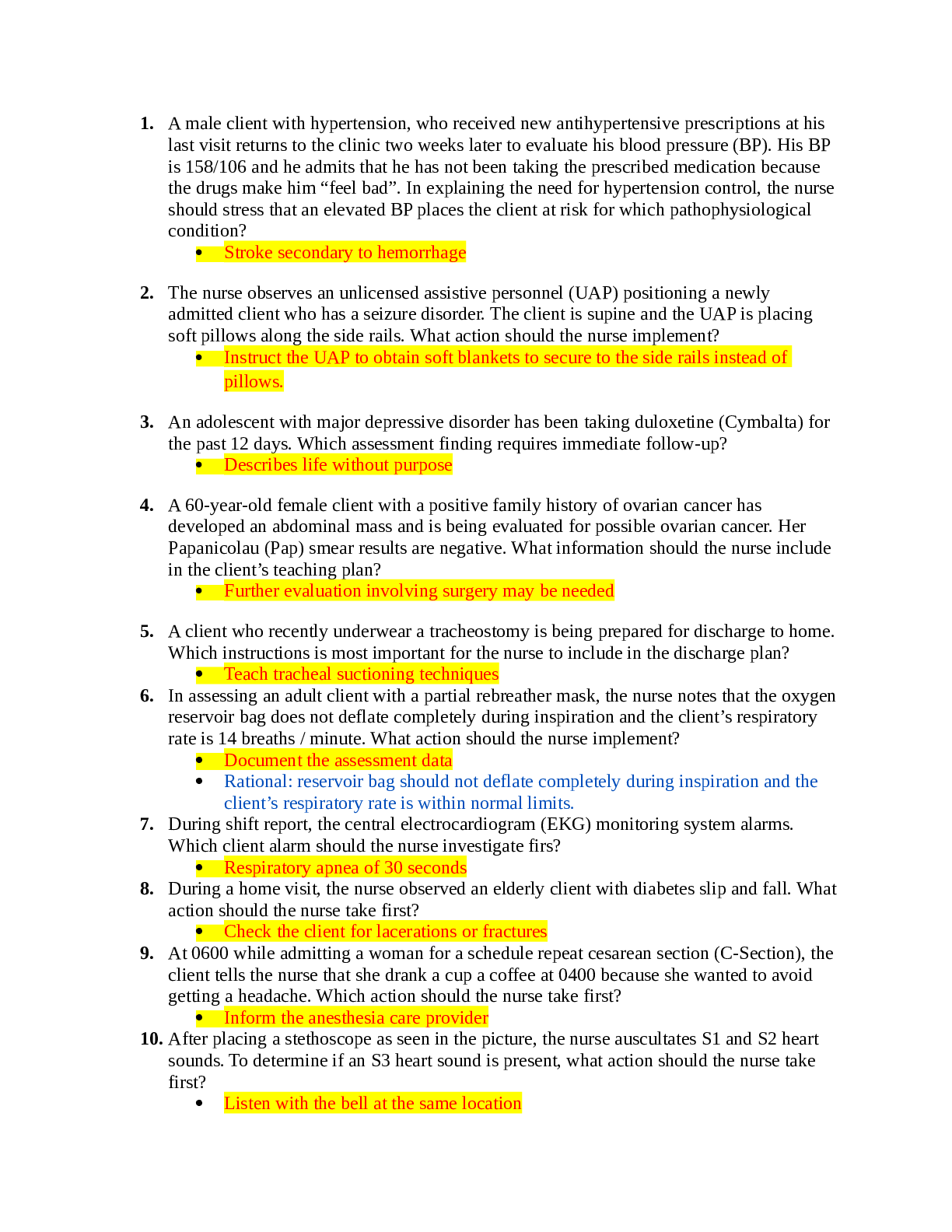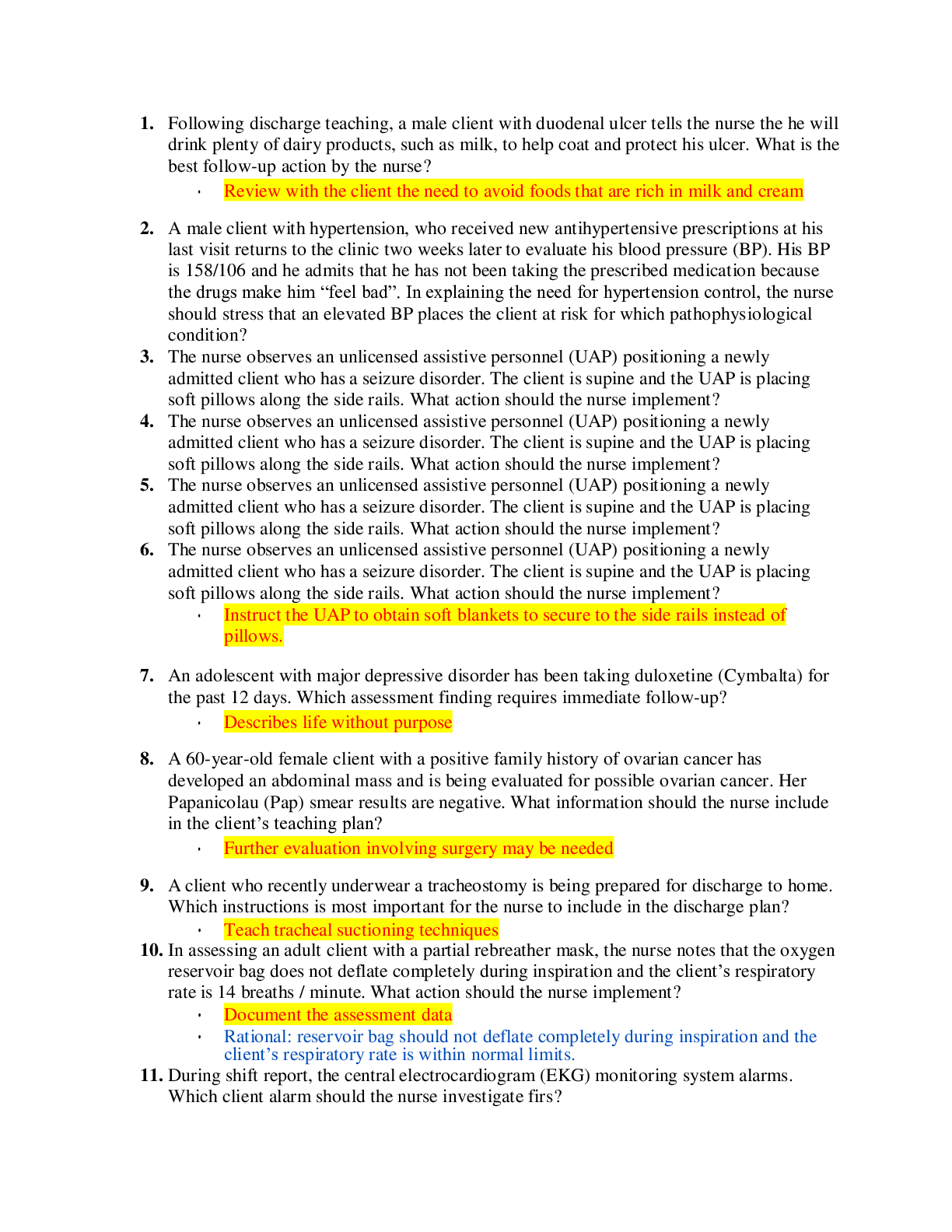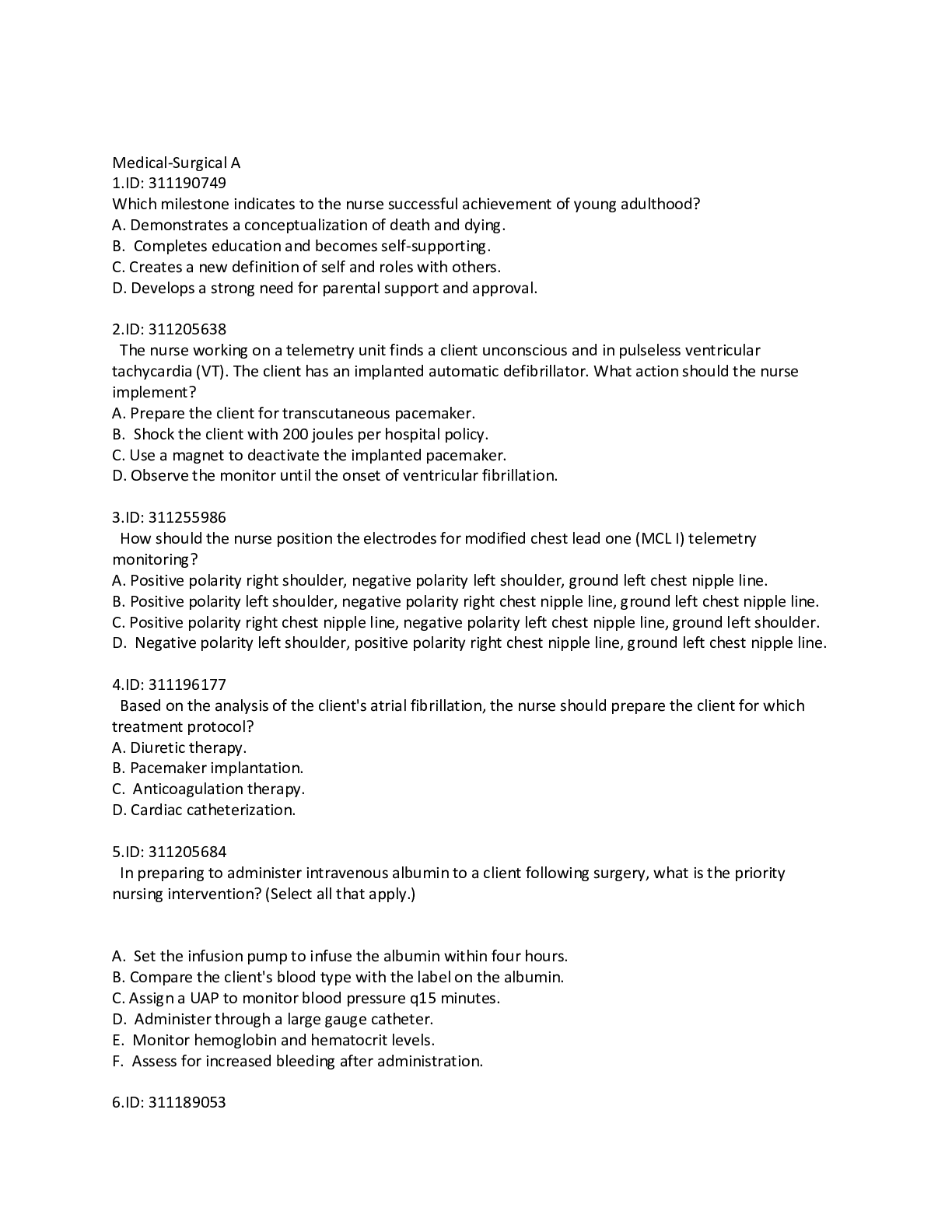*NURSING > HESI MED SURG > HESI MED-SURG Practice Questions & Key Terms Correct Answers Graded A+ (All)
HESI MED-SURG Practice Questions & Key Terms Correct Answers Graded A+
Document Content and Description Below
HESI MED-SURG Practice Questions & Key Terms Correct Answers Graded A+ A female client with a nasogastric tube attached to low suction states that she is nauseated. The nurse assesses that there ha... s been no drainage through the nasogastric tube in the last 2 hours. Which action should the nurse take first? A. Irrigate the nasogastric tube with sterile normal saline. B. Reposition the client on her side. C. Advance the nasogastric tube 5 cm. D. Administer an intravenous antiemetic as prescribed. ✔Ans✔ B. The priority is to determined if the tube is functioning correctly, which would relieve the client's nausea. The least invasive intervention is to reposition the client (B), should be attempted first, followed by (A & C) if these are unsuccessful then (D). When assigning clients on a medical-surgical floor to a RN and a LPN, it is best for the charge nurse to assign which client to the LPN? A. A child with bacterial meningitis with recent seizures. B. An older adult client with pneumonia and viral meningitis. C. A female client in isolation wiht meningococcal meningitis. D. A male client 1 day post-op after drainage of a brain abscess. ✔Ans✔ B. Is the most stable. A, C, D have an increased risk for elevated ICP. Which description of symptoms is characteristic of a client with diagnosed with trigeminal neuralgia (tic douloureux)? A. Tinnitus, vertigo, and hearing difficulties. B. Sudden, stabbing, severe pain over the lip and chin. C. Unilateral facial weakness and paralysis. D. Difficulty in talking, chewing, and swallowing. ✔Ans✔ B. Trigeminal neuralgia is characterized by paroxysms of pain, similar to an electric shock, in the area innervated by one or more branches of the trigeminal nerve. A. Characteristic of Meniere's C. Characteristic of Bell palsey D. Characteristic of disorders of the hypoglossal (12th cranial nerve) Which abnormal lab finding indicates that a client with diabetes needs further evaluation for diabetic nephropathy? A. Hypokalemia B. Microalbuminauria C. Elevated serum lipids D. Ketonuria ✔Ans✔ B. Microalbuminuria is the earliest sign of nephropathy and indicates the need for follow-up evaluation. Hyperkalemia (A) is associated with end stage renal disease caused by diabetic nephropathy. (C) may be elevated in end stage renal disease. (D) may signal the onset of DKA. An older male client comes to the geriatric screening clinic complaining of pain in his left calf. The nurse notices a reddened area on the calf of his right leg that is warm to touch and the nurse suspects that the client may have thrombophlebitis. Which addition assessment is most important for the nurse to perform? A. Measure calf circumference. B. Auscultate the client's breath sounds. C. Observe for ecchymosis and petechiae. D. Obtain the client's blood pressure. ✔Ans✔ B. Since the client may have a pulmonary embolus secondary to the thrombophlebitis. A. Would support the nurses assessment. C. Least helpful since bruising is not associated with thrombophlebitis. D. Less important then auscultation. The nurse know that a client taking diuretics must be assessed for the development of hypokalemia, and that hypokalemia will create changes in the client's normal ECG tracing. Which ECG change would be an expected finding in the client with hypokalemia? A. Tall, spiked T waves B. A prolonged QT interval C. A widening QRS complex D. Presence of a U wave ✔Ans✔ D. A U wave is a positive deflection following the T wave and is often present with hypokalemia. A, B, C indicate hyperkalemia. An older client is admitted with a diagnosis of bacterial pneumonia. The nurse's assessment of the client will most likely reveal which S/SX? A. Leukocytosis and febrile. B. Polycythemia and crackles. C. Pharyngitis and sputum production. D. Confusion and tachycardia. ✔Ans✔ D. The onset of pneumonia is the older may be signaled by general deterioration, confusion, increased heart rate or increased respiratory rate. (A, B, C) are often absent in the older with bacterial pneumonia. The nurse observes ventricular fibrillation on telemetry and upon entering the clients bathroom finds the client unconscious on the floor. What intervention should the nurse implement first? A. Administer an antidysrhythmic medication. B. Start cardiopulmonary resuscitation. C. Defibrillate the client at 200 joules. D. Assess the client's pulse oximetry. ✔Ans✔ B. Ventricular fibrillation is a life-threatening dysrhythmia and CPR should be started immediately. A & C are appropriate but B is the priority. D does not address the seriousness of the situation. An older female client with dementia is transferred from a long term care unit to an acute care unit. The client's children express concern that their mother's confusion is worsening. How should the nurse respond? A. "It is to be expected that older people will experience progressive confusion." B. "Confusion in an older person often follows relocation to new surroundings." C. "The dementia is progressing rapidly, but we will do everything we can to keep your mother safe." D. "The acute care staff is not as experienced as the long-term care staff at dealing with dementia." ✔Ans✔ B. Relocation often results in confusion among older clients and is stressful to clients of all ages. (A) is an inaccurate stereotype. (C) is most likely false there are many factors that cause increased temporary confusion. (D) may be true but does not offer the family a sense of security about the care. The nurse plans to help an 18-year-old developmentally disabled female client ambulate on the first postoperative day. When the nurse tells her it is time to get out of bed, the client becomes angry and yells at the nurse. "Get out of here! I'll get up when I'm ready." Which response should the nurse provide? A. "Your healthcare provider has prescribed ambulation on the first postoperative day." B. "You must ambulate to avoid serious complications that are much more painful." C. "I know how you feel; you're angry about having to do this, but it is required." D. "I'll be back in 30 minutes to help you get out of bed and walk around the room." ✔Ans✔ D. Returning in 30 minutes provides a cooling off period, is firm, direct, nonthreatening, and avoids argument with the client. B is threatening. C. assumes what the client is feeling. A. avoids the nurse's responsibility to ambulate the client. The nurse is performing hourly neurological check for a client with a head injury. Which new assessment finding warrants the most immediate intervention by the nurse? A. A unilateral pupil that is dilated and nonreactive to light. B. Client cries out when awakened by a verbal stimulus. C. Client demonstrates a loss of memory to the events leading up to the injury. D. Onset of nausea, headache, and vertigo. ✔Ans✔ A. Any changes in pupil size and reactivity is an indication of increasing ICP and should be reported immediately. (B) is normal for being awakened. (C & D) are common manifestations of head injury and less of an immediacy than (A). [Show More]
Last updated: 1 year ago
Preview 1 out of 84 pages

Reviews( 0 )
Document information
Connected school, study & course
About the document
Uploaded On
Feb 16, 2023
Number of pages
84
Written in
Additional information
This document has been written for:
Uploaded
Feb 16, 2023
Downloads
0
Views
105
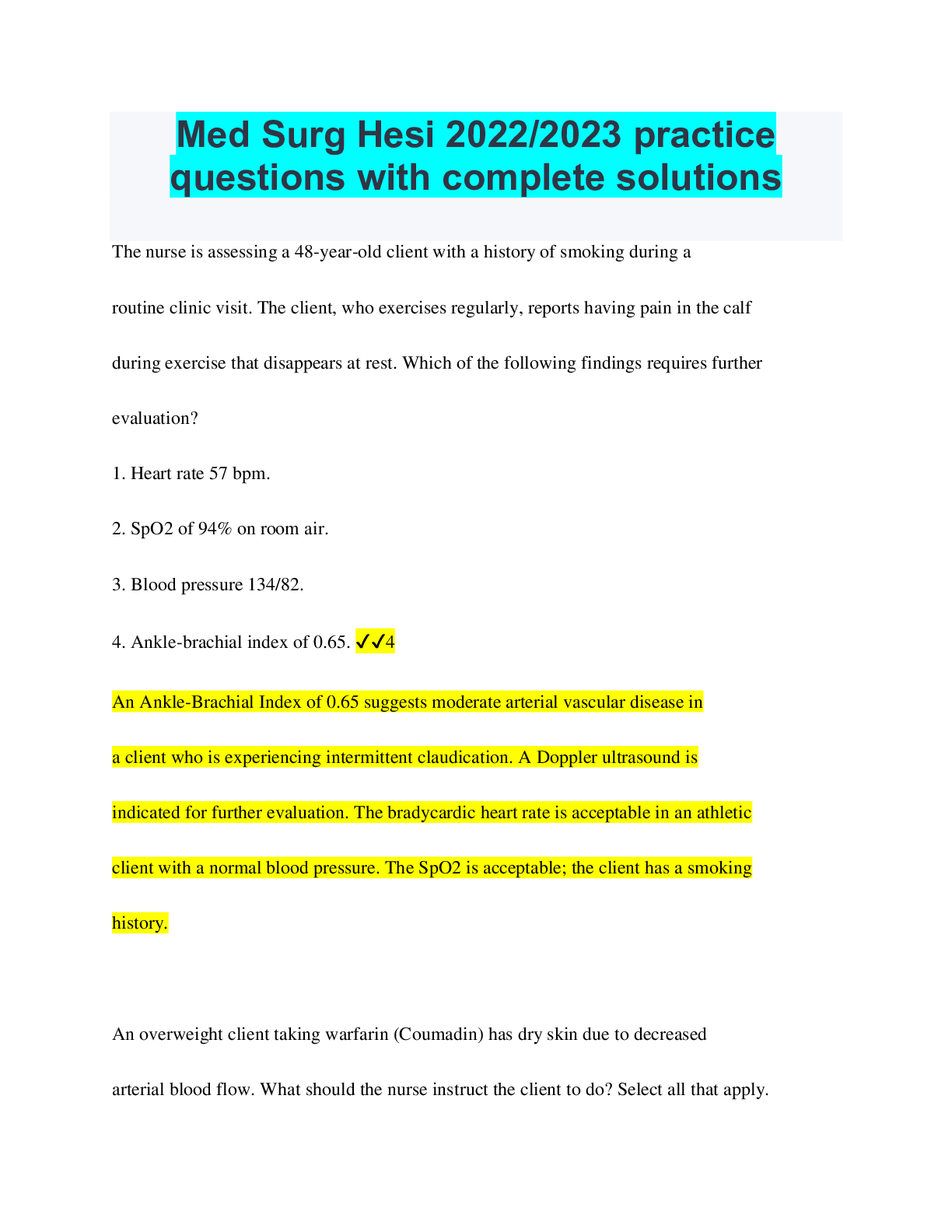

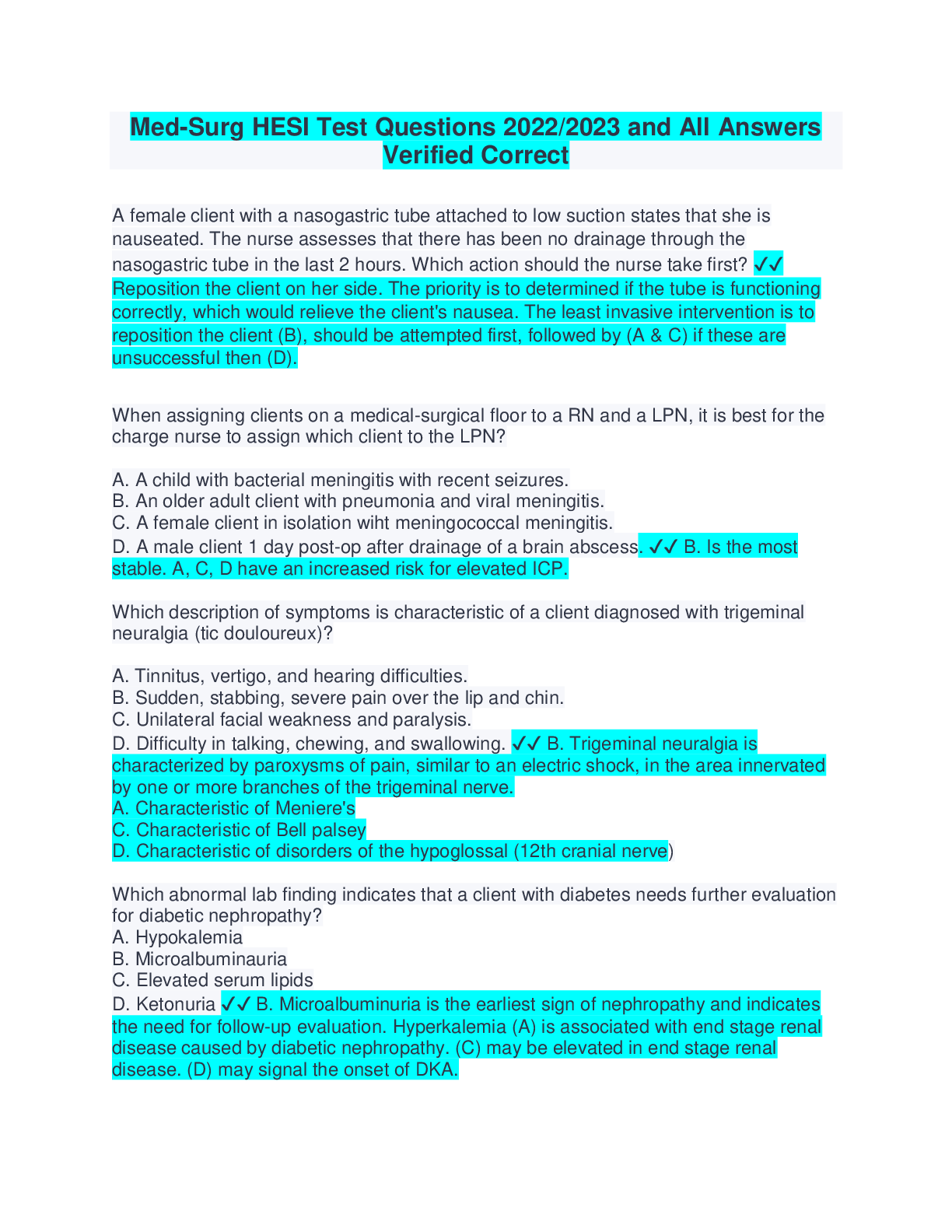
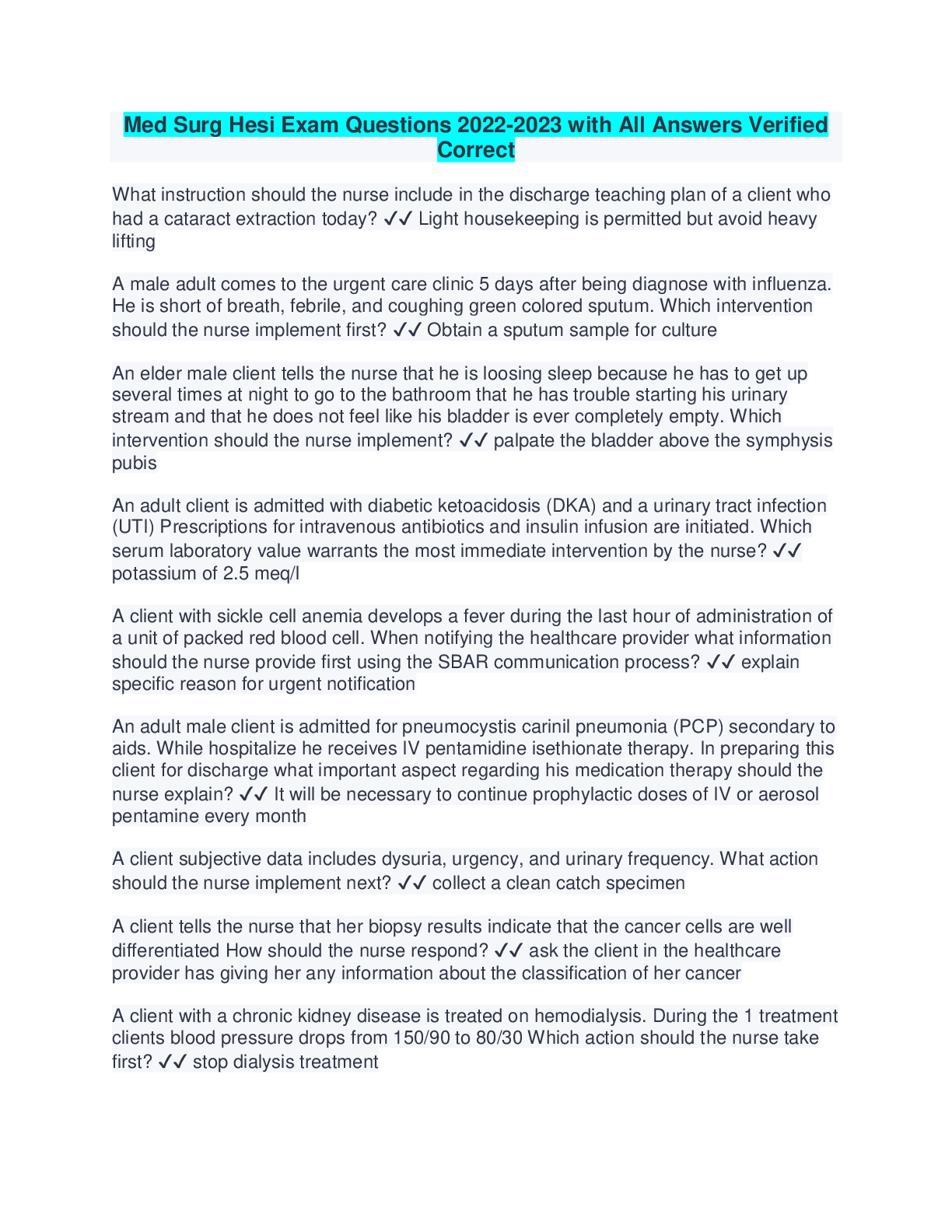
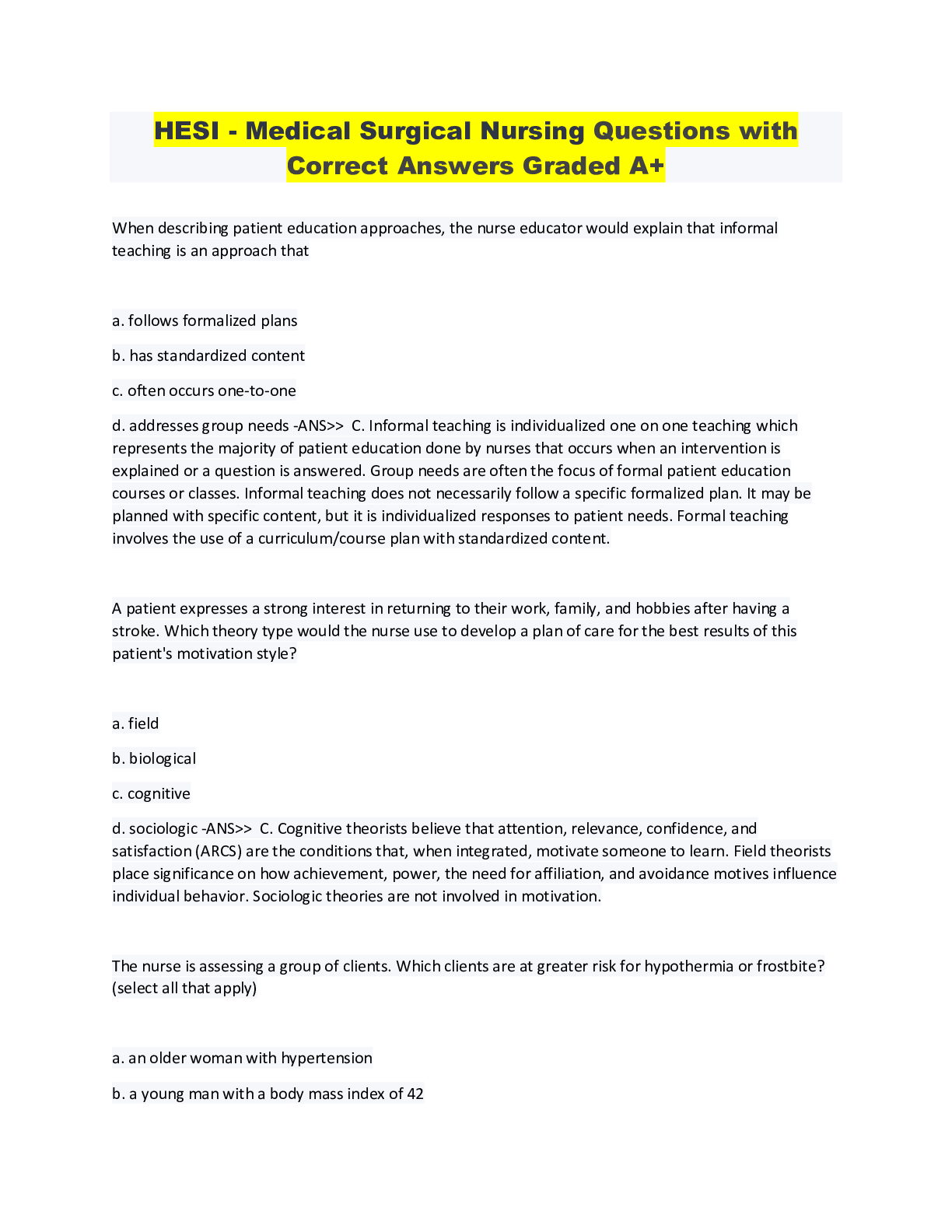
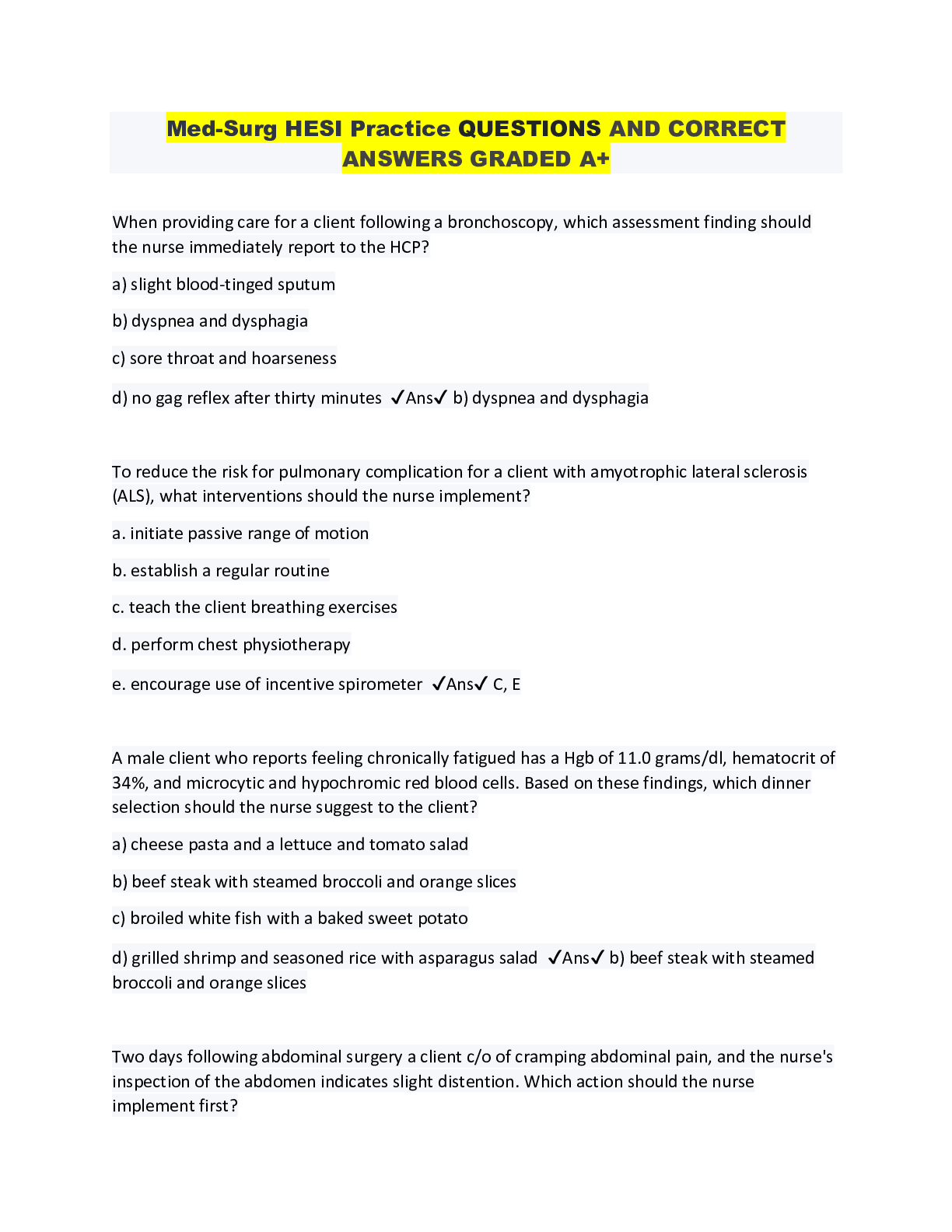
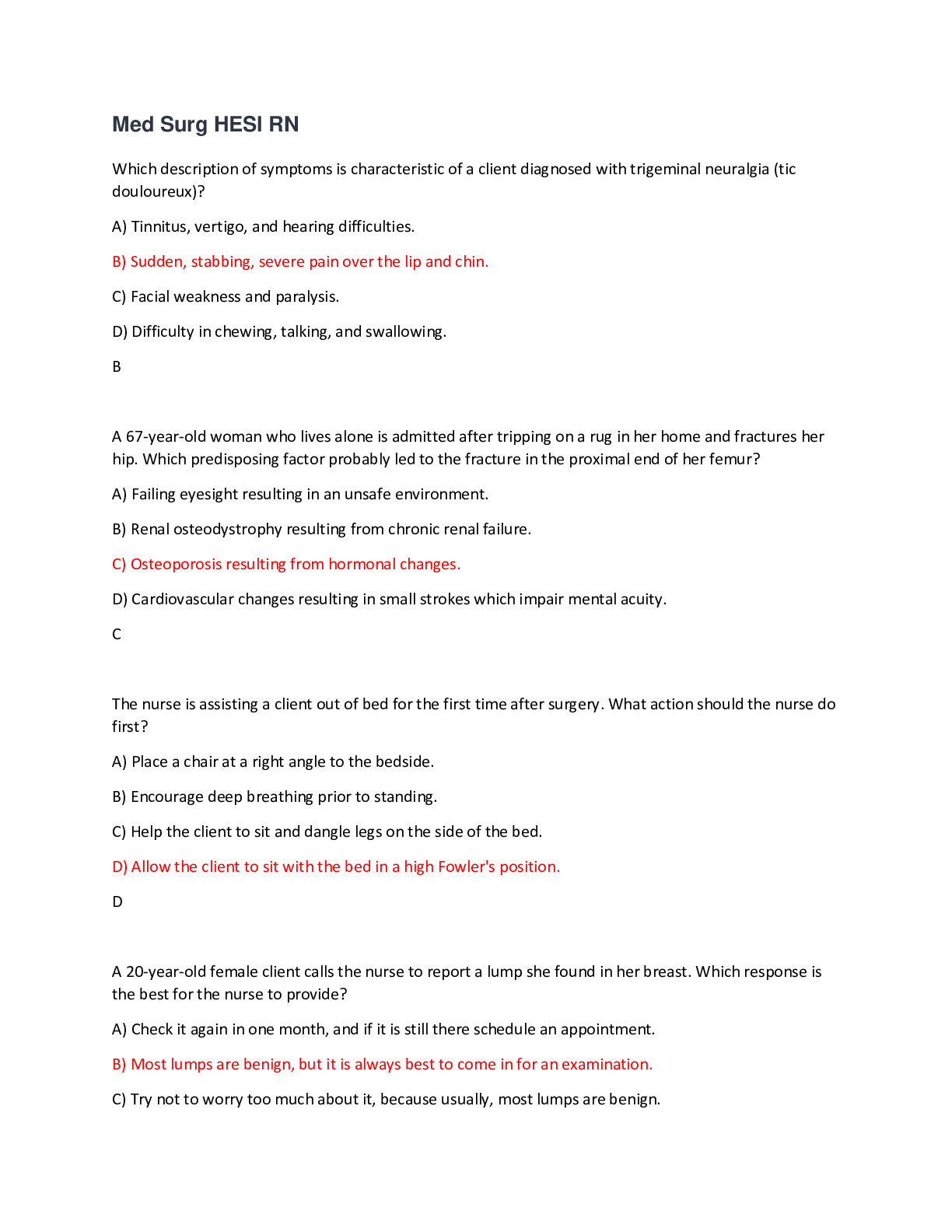
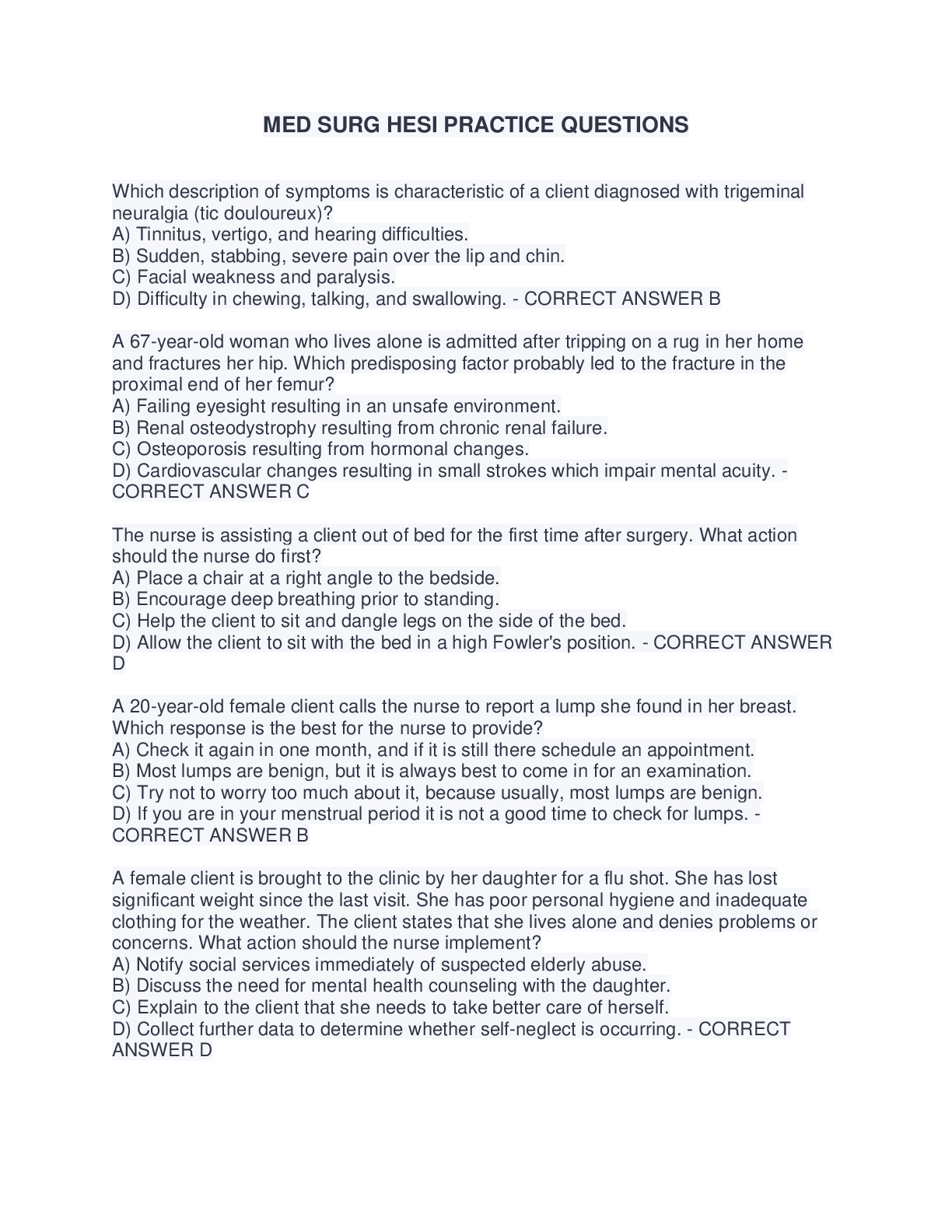
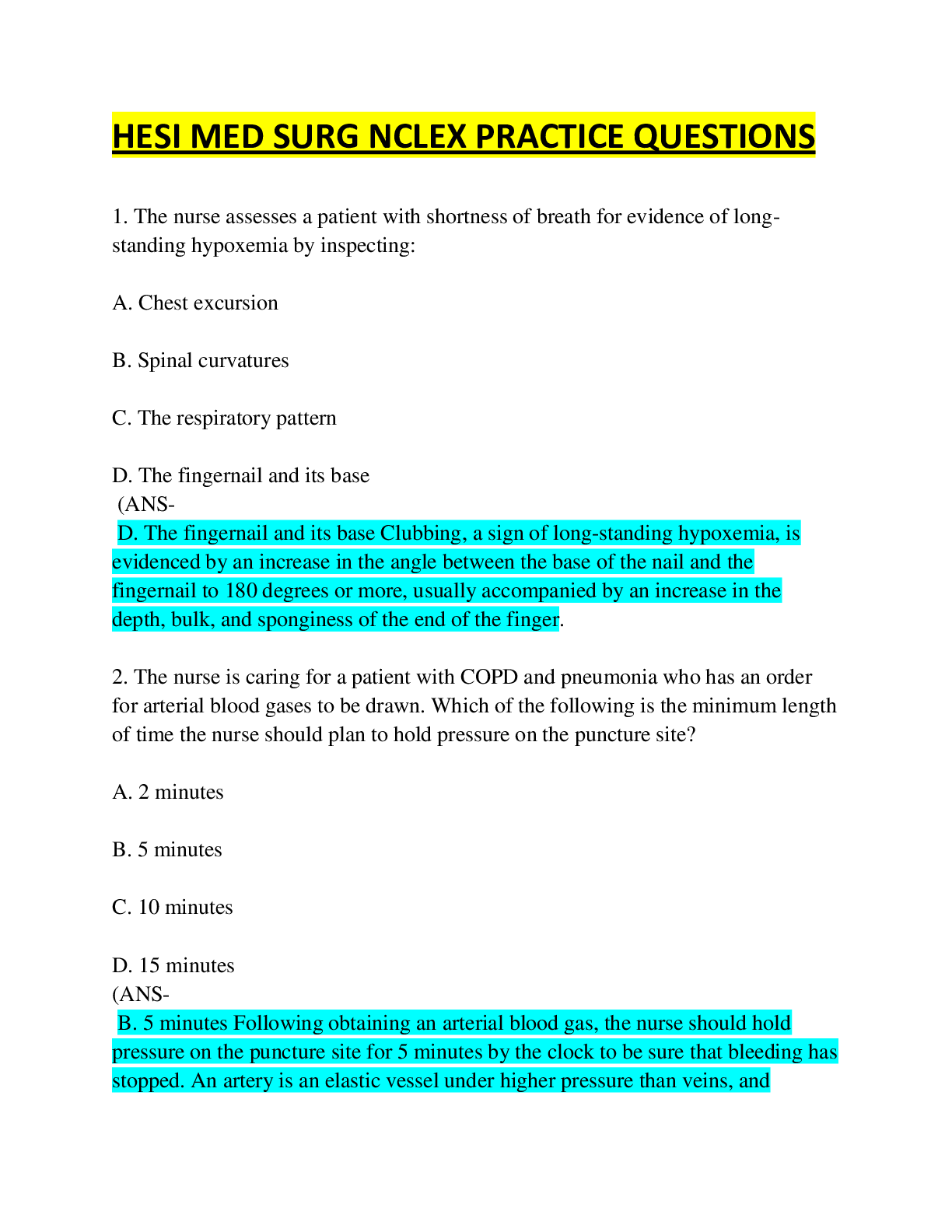
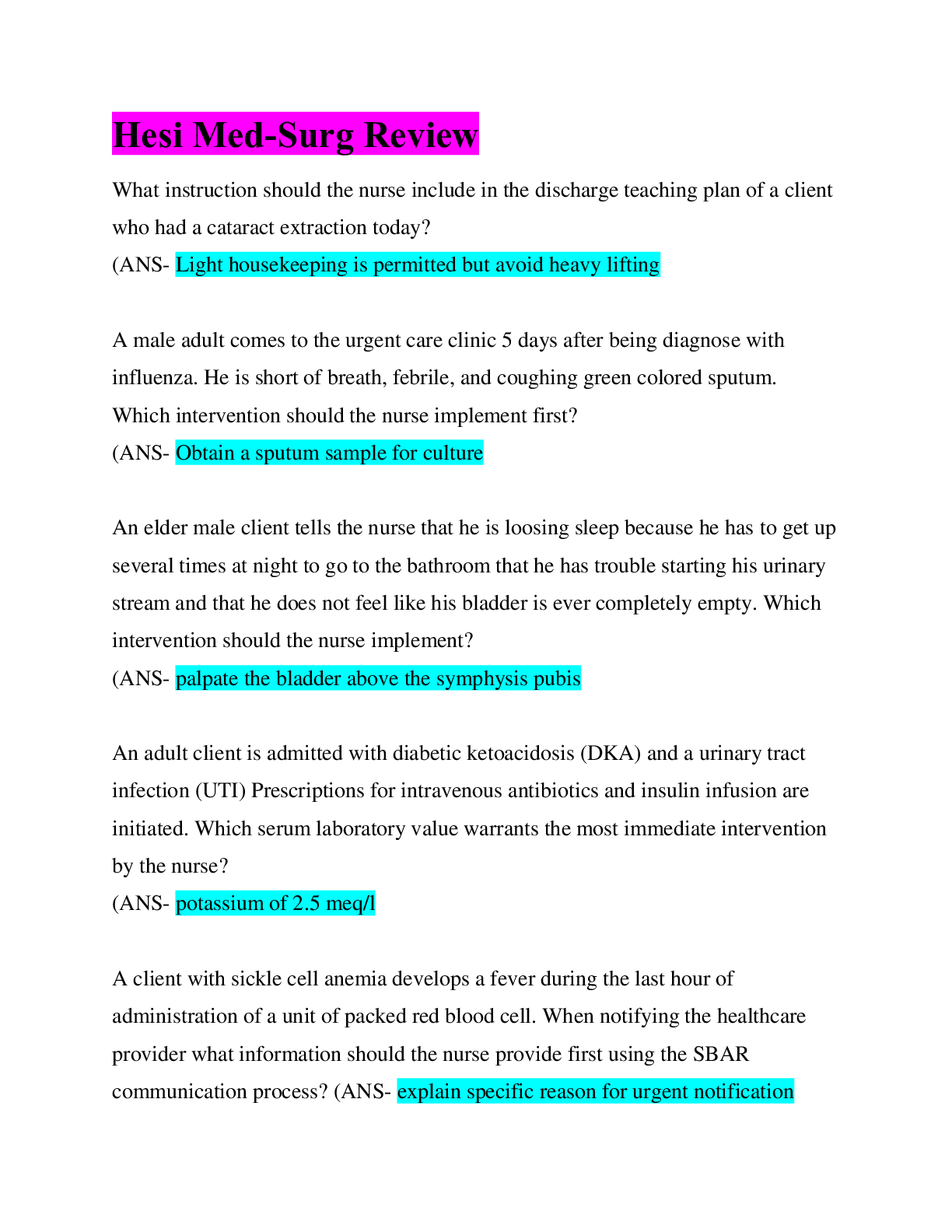
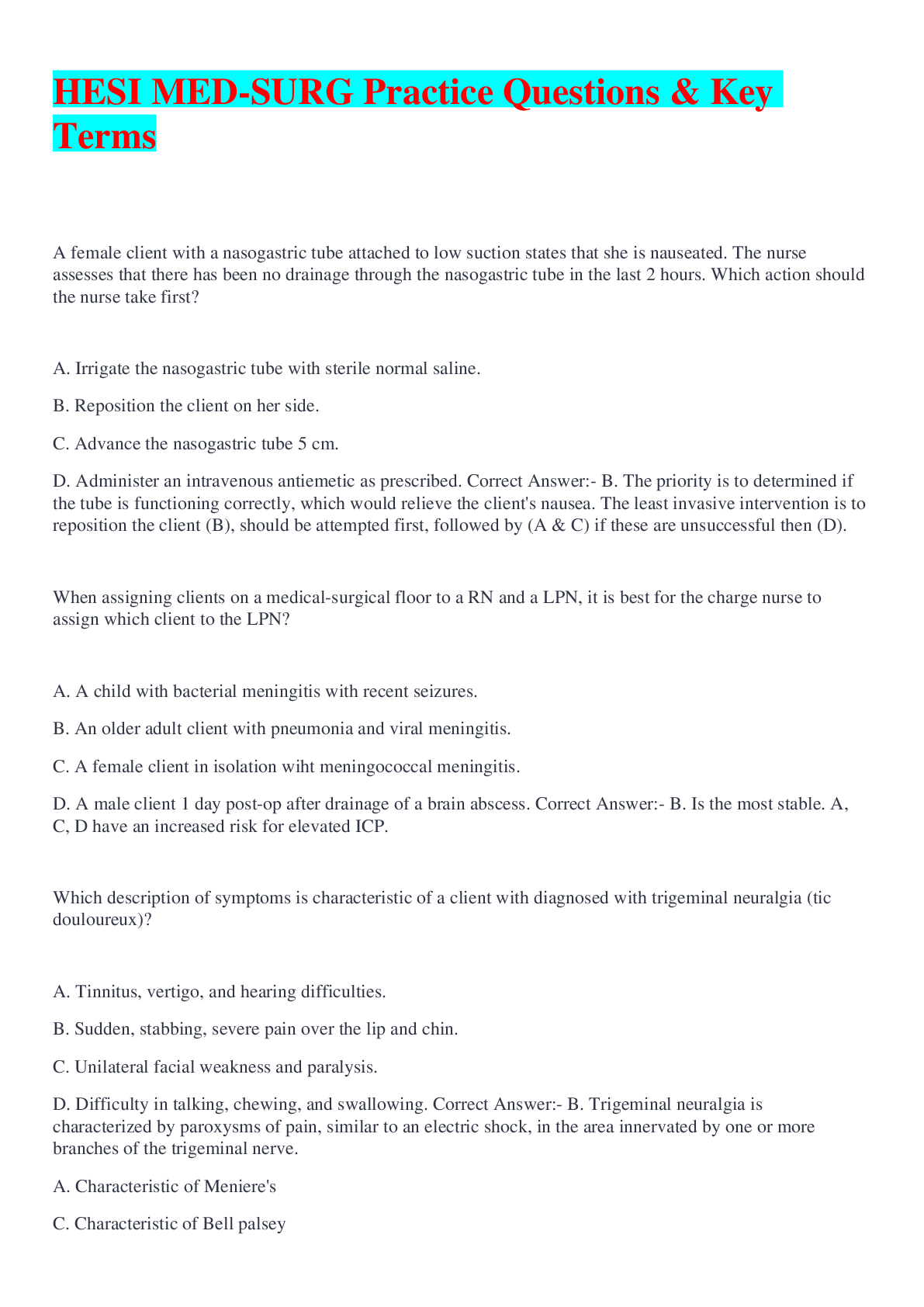
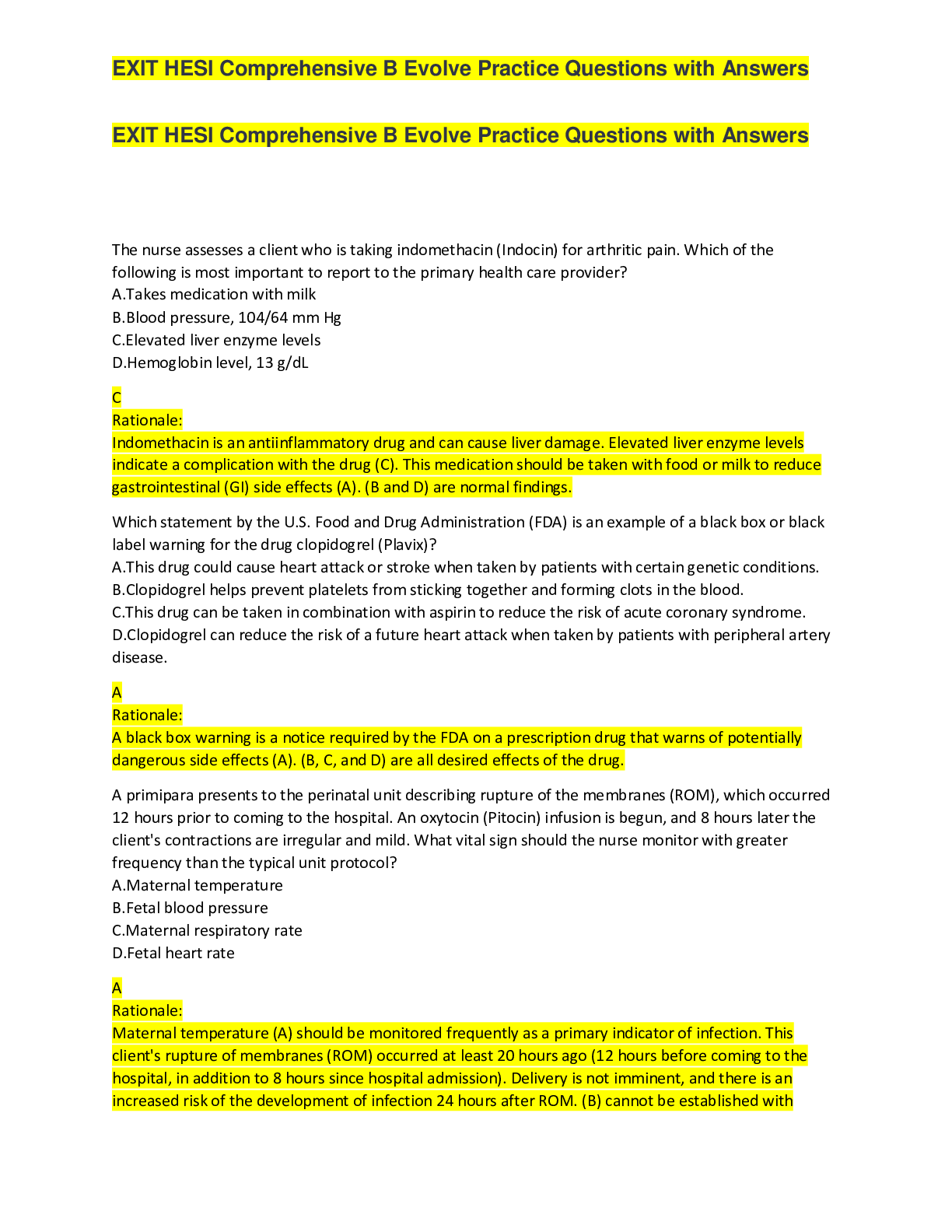
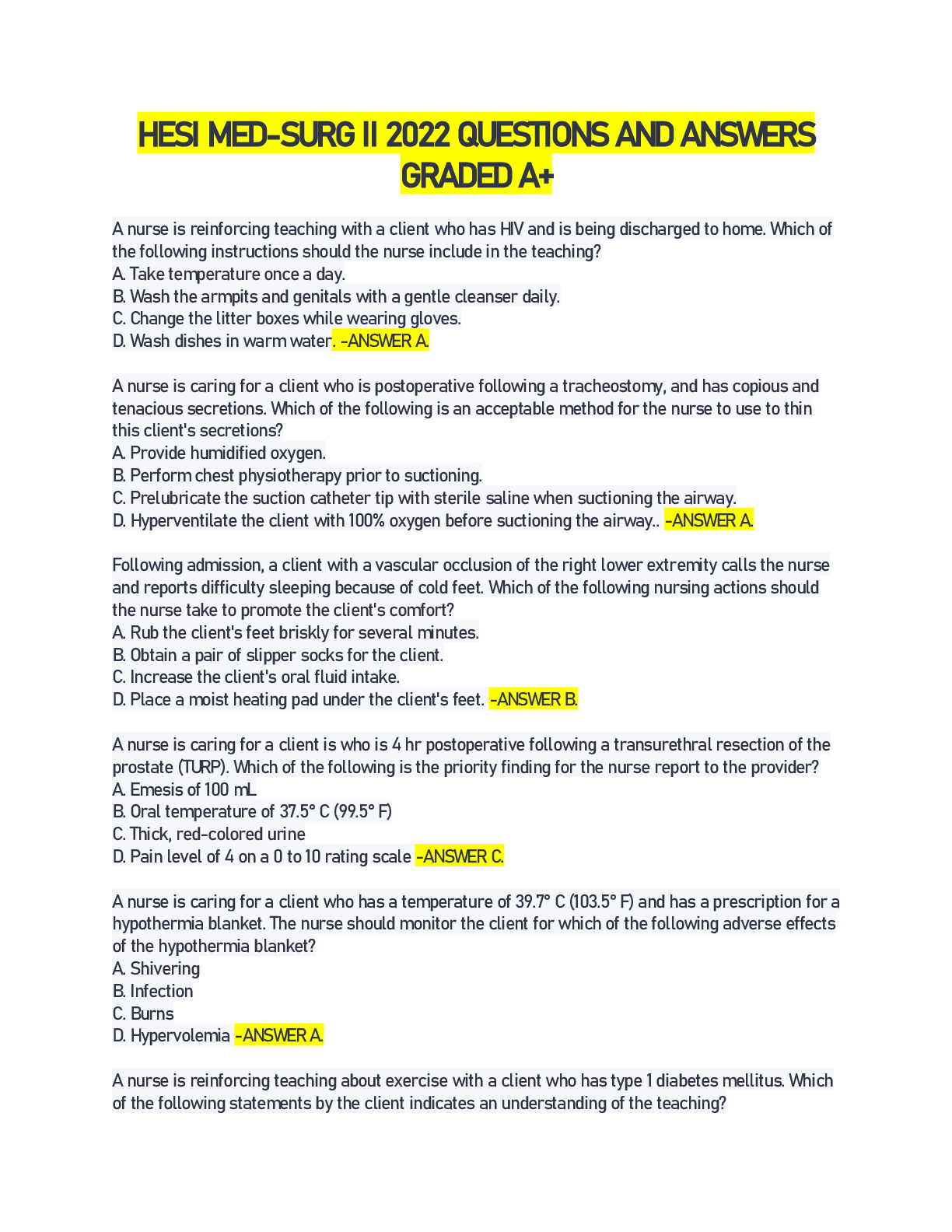

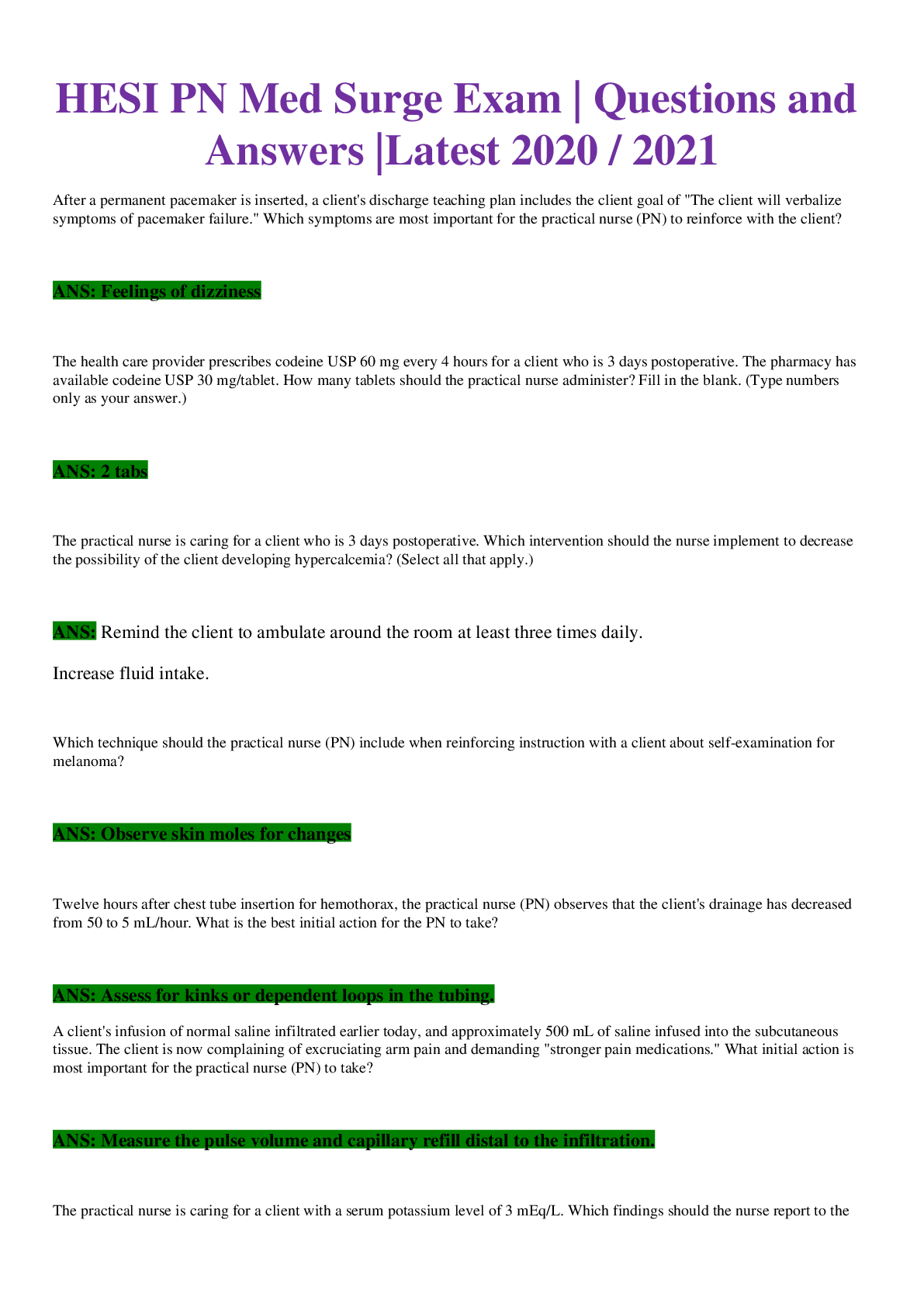

 Test Bank.png)
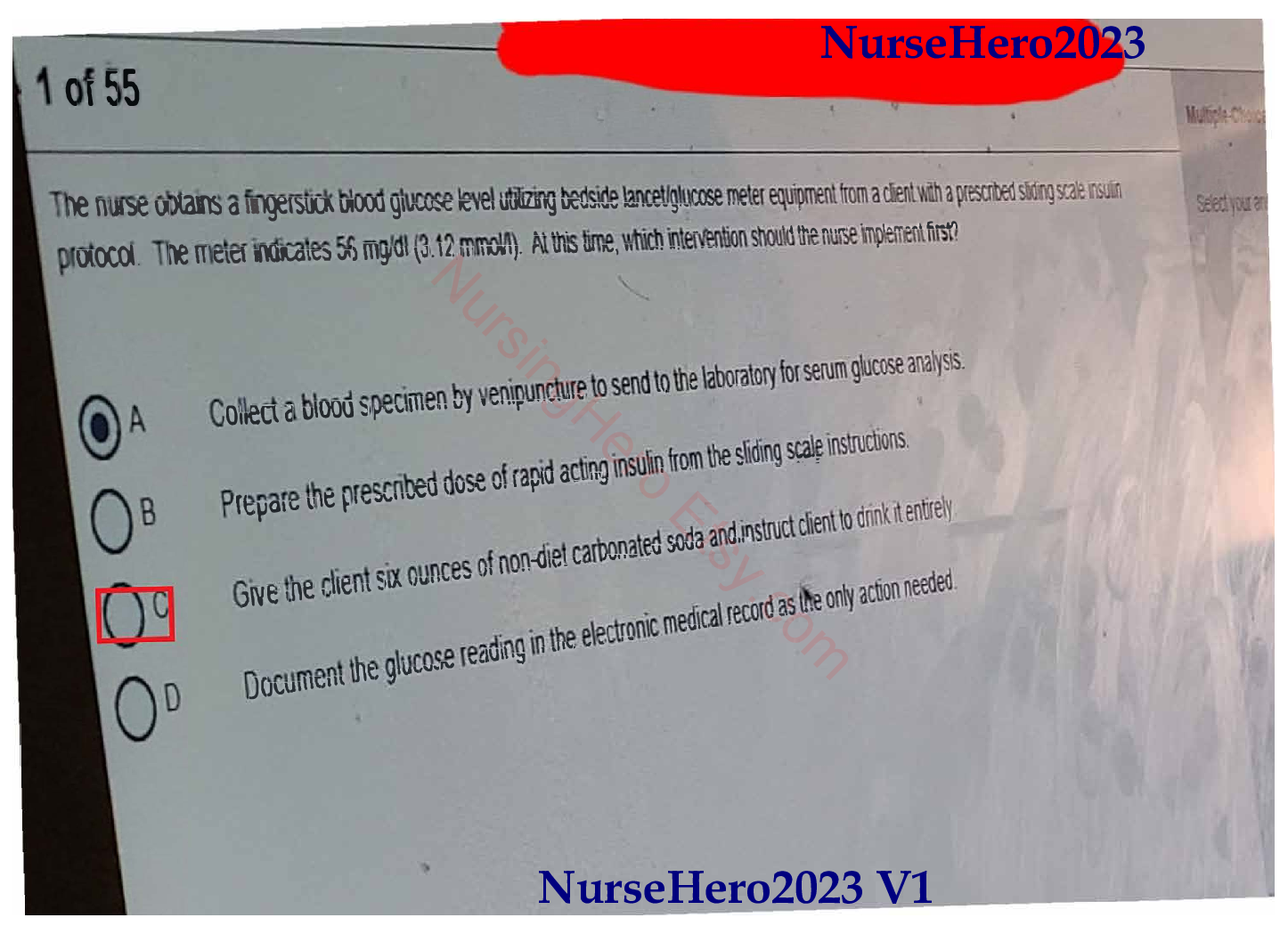

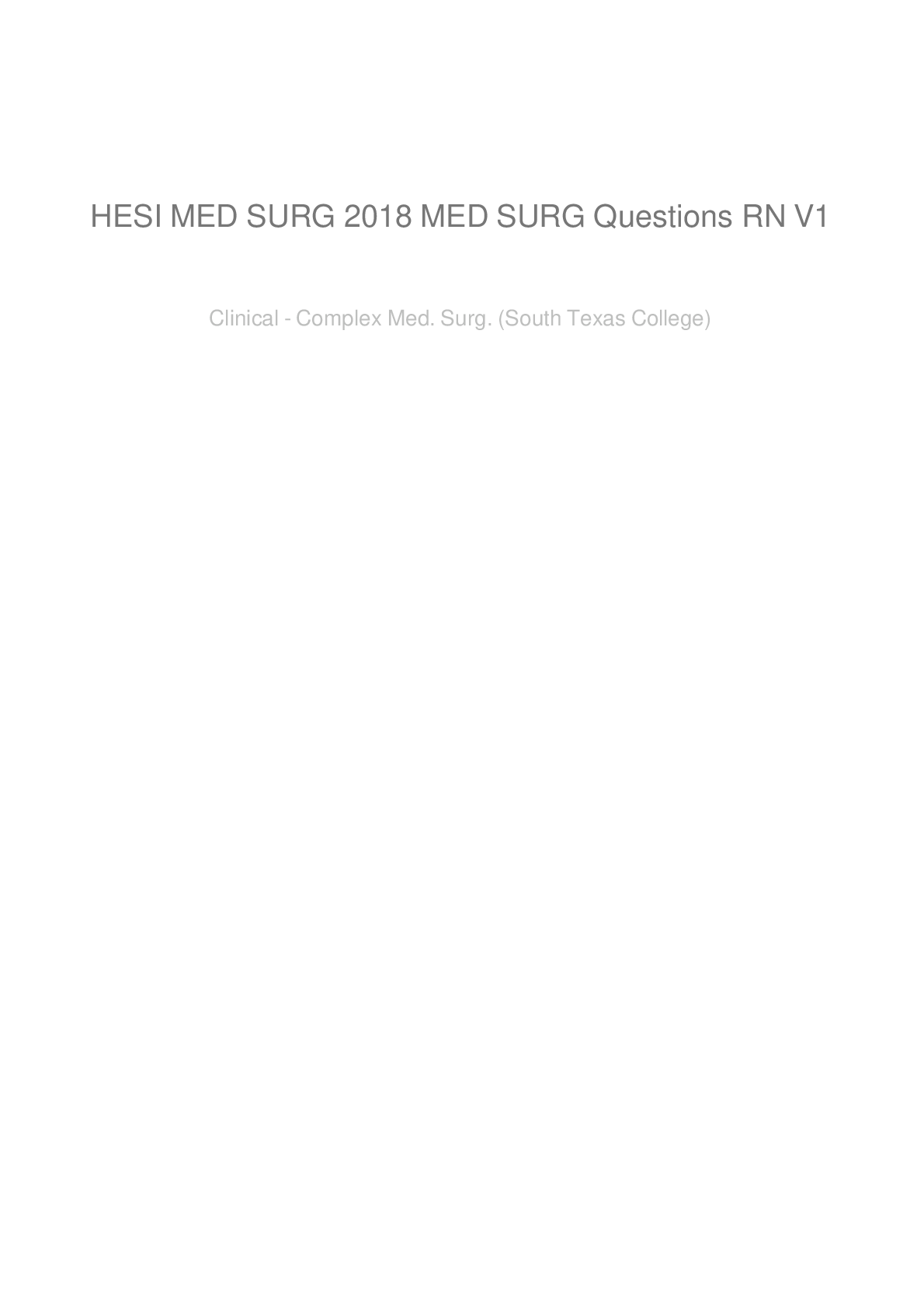
.png)
